An Early Warning Protection Method for Electric Vehicle Charging Based on the Hybrid Neural Network Model
Abstract
:1. Introduction
- (1)
- In terms of model structure; firstly, the Batch Normalization layer is added to speed up the convergence and prevent the gradient explosion; secondly, deep data features are extracted by overlaying two ConvLSTM cells; then the array is flattened with the Flatten layer; finally, a Dense layer is used to extract the correlation between the features after the nonlinear variation and map them to the output space.
- (2)
- In terms of performance comparison, set the same parameters and compare the accuracy of the trained CNN, LSTM, BiLSTM, CNN-LSTM, and ConvLSTM models to verify the feasibility of the proposed ConvLSTM prediction model.
- (3)
- In terms of practical applications, after the trained model meets the model accuracy, setting the thresholds can realize the model early warning and alarm tasks to predict the occurrence of faults and to effectively avoid charging accidents in EVs.
2. Problem Statement
2.1. Electric Vehicle Charging System Analysis
2.2. Reference Basis for the Electric Vehicle Charging Process
2.3. Analysis of the Model Selection Process
3. Design of Early Warning Hybrid Model for Charging Process
3.1. Introduction to the Components of the Early Warning Hybrid Model
- (1)
- Data selection and preprocessing: The charging data such as charging voltage, charging current, charging temperature, and charging time of the EV are transmitted to the charging pile through the CAN bus, and the charging pile transmits it to the backstage database. The backstage platform normalizes the charging data. The structure is shown in the data selection and preprocessing part of Figure 2.
- (2)
- Model construction: CNN is a neural network consisting of a convolutional layer, a pooling layer, and an output layer. It can share the weights of the convolutional kernel, reduce the free parameters, reduce the complexity of the network, and reduce overfitting, which has great advantages. It also has a powerful time series feature and extraction capability. Its calculation formula is:
- (3)
- Sliding window: Using the sliding window analysis method, a sliding window of length N is specified, and the data is processed through it. After the window slides forward one point, the predicted value is added to this window to generate a new window of the same sequence length. This process is repeated until the window is covered by the true value. Through the obtained several continuous sub-time series data, the prediction residual is continuously processed and analyzed to eliminate the influence of wrong charging data on the residual change during the transmission process, thereby avoiding false alarms effectively. The structure is shown in the Sliding window part of Figure 2.
- (4)
- Status discrimination: The structure is shown in the status discrimination part of Figure 2. Using the sliding window to analyze and process the residual of the normal charging data and set the appropriate warning threshold. The formula for calculating the early warning threshold is:
3.2. Introduction to the Early Warning Hybrid Model Process
- (a)
- Data Processing: Collect the front end EV charging data and transmit it to the backstage database. Filter the charging data with reference significance, normalize and preprocess it, then divide the data set into a 25% training set and a 75% test set.
- (b)
- Model Training: Use training set to determine LSTM and BiLSTM model parameters, train the corresponding model and output its evaluation standard values; determine CNN model parameters, train CNN, CNN-LSTM, and ConvLSTM models and output their evaluation standard values. If the model meets the model accuracy requirements, enter the next stage to set the EV temperature warning threshold; if not, return to retrain the corresponding model.
- (c)
- Status Judgment: Set the EV temperature early warning and alarm thresholds. If its temperature is within the early warning threshold, this state indicates that the EV is charged normally and is the most ideal charging state. If its temperature is greater than the early warning threshold and less than the alarm threshold, the EV is in an early warning state at this time. If its temperature is greater than the alarm threshold, the EV is in an alarm state at this time.
- (d)
- Status Processing: If the EV is in a normal charging state, no processing is required; if the EV is in an early warning charging state, the charging current will be reduced by 10% after an early warning signal is issued. If the EV is in an alarming state, the alarm signal will be issued, and then the charging power will be cut off to stop charging.
4. Experimental Verification and Analysis
4.1. Data Selection
4.2. Model Construction and Evaluation Criteria
4.3. Analysis of Prediction Experiment Results
- (a)
- In the early stage of temperature prediction, the CNN-LSTM model in training set one gives predictions similar to the actual temperature values, and with more training data, the ConvLSTM model gives the best predictions in the middle and late stages of prediction.
- (b)
- In the early stage of temperature prediction, the ConvLSTM model in training set two was poorly predicted. The closest to the actual value was the LSTM model. However, in the middle and late stage, the ConvLSTM model and the BiLSTM model were the closest to the actual value.
- (c)
- The model prediction results of training set three are more satisfactory, and the ConvLSTM model proposed in this paper has the best prediction results in all three stages of prediction, which are closest to the actual values.
- (d)
- In the early and late stages of prediction, the ConvLSTM model and the BiLSTM model in training set four were closer to each other and had better predictions. However, the ConvLSTM model outperformed the BiLSTM model in the midterm prediction.
- (1)
- Training set one: Using the top 25% of the data as training set one, the prediction accuracy of the different models was evaluated. The experimental results showed that the ConvLSTM models all outperformed the other four types of models in terms of prediction accuracy, with a 0.007 reduction in RMSE, a 1.66 reduction in MAPE, and a 0.18 improvement in r2 compared to the CNN-LSTM models.
- (2)
- Training set two: The prediction accuracy of the different models was evaluated by training set two. The experimental results showed that the prediction accuracy of the models in training set two were all better than that in training set one. Regarding the ConvLSTM model in training set two, RMSE of was reduced by 0.003, MAPE was reduced by 0.07, and r2 was improved by 0.05 compared with that of the ConvLSTM in training set one.
- (3)
- Training set three: Among the four training sets identified, training set three had the best prediction, with RMSE and MAPE reaching the lowest and r2 the highest, where RMSE, MAPE, and r2 were 0.029, 11.37 and 0.89, respectively.
- (4)
- Training set four: In the four-part training set, training set four only predicted better than training set one. Compared with the ConvLSTM model in training set one, RMSE decreased by 0.01, MAPE decreased by 0.04, and r2 improved by 0.04.
5. Conclusions
Author Contributions
Funding
Conflicts of Interest
References
- Wróblewski, P.; Lewicki, W. A method of analyzing the residual values of low-emission vehicles based on a selected expert method taking into account stochastic operational parameters. Energies 2021, 14, 6859. [Google Scholar] [CrossRef]
- Wang, X.; Jin, M.; Feng, W.; Shu, G.Q.; Tian, H.; Liang, Y.C. Cascade energy optimization for waste heat recovery in distributed energy systems. Appl. Energy 2018, 230, 679–695. [Google Scholar] [CrossRef]
- Li, M.; Cui, S.; Huang, H.Z.; Jiang, Y.; Wei, W.R. Effect of pipes in heat pump system on electric vehicle energy saving. Int. J. Green Energy 2020, 17, 666–675. [Google Scholar] [CrossRef]
- Jiang, L.R.; Li, T.Y.; Li, B.W.; Diao, X.H.; Zhang, J. Development and simulation of real-time early warning protection system for electric vehicle charging based on a two-layer protection model. World Electr. Veh. J. 2022, 13, 73. [Google Scholar] [CrossRef]
- Wróblewski, P.; Kupiec, J.; Drożdż, W.; Lewicki, W.; Jaworski, J. The economic aspect of using different plug-in hybrid driving techniques in urban conditions. Energies 2021, 14, 3543. [Google Scholar] [CrossRef]
- Hong, J.C.; Wang, Z.P.; Ma, F.; Yang, J.; Xu, X.M.; Qu, C.H.; Zhang, J.H.; Shan, T.X.; Hou, Y.K.; Zhou, Y.J. Thermal runaway prognosis of battery systems using the modified multiscale entropy in real-world electric vehicles. IEEE Trans. Transp. Electrif. 2021, 7, 2269–2278. [Google Scholar] [CrossRef]
- Gao, D.X.; Wang, Y.; Zheng, X.Y.; Yang, Q. A fault warning method for electric vehicle charging process based on adaptive deep belief network. World Electr. Veh. J. 2021, 12, 265. [Google Scholar]
- Shah, K.; Chalise, D.; Jain, A. Experimental and theoretical analysis of a method to predict thermal runaway in Li-ion cells. J. Power Sources 2016, 330, 167–174. [Google Scholar] [CrossRef] [Green Version]
- Lyu, N.W.; Jin, Y.; Xiong, R.; Miao, S.; Gao, J.F. Real-time overcharge warning and early thermal runaway prediction of li-ion battery by online impedance measurement. IEEE Trans. Ind. Electron. 2021, 69, 1929–1936. [Google Scholar] [CrossRef]
- Jiang, L.L.; Deng, Z.W.; Tang, X.L.; Hu, L.; Lin, X.K.; Hu, X.S. Data-driven fault diagnosis and thermal runaway warning for battery packs using real-world vehicle data. Energy 2021, 234, 121266. [Google Scholar] [CrossRef]
- Khishe, M.; Caraffini, F.; Kuhn, S. Evolving deep learning convolutional neural networks for early COVID-19 detection in chest X-ray images. Mathematics 2021, 9, 1002. [Google Scholar] [CrossRef]
- Li, C.R.; Xiao, F.; Fan, Y.X.; Yang, G.R.; Tang, X. SOH estimation of lithium-ion battery based on Convolutional Neural Network. J. Electr. Eng. 2020, 35, 4106–4119. [Google Scholar]
- Gao, D.X.; Lin, X.H. Fault diagnosis method of DC charging points for EVs based on Deep Belief Network. World Electr. Veh. J. 2021, 12, 47. [Google Scholar] [CrossRef]
- Wang, C.Y.; Huang, T.C.; Wu, Y.M. Using LSTM neural networks for onsite earthquake early warning. Seismol. Res. Lett. 2022, 93, 814–826. [Google Scholar] [CrossRef]
- Liu, J.M.; Su, Y.Q.; Wei, P.; Liu, Y.H. Video-EEG interaction cooperative emotion recognition based on Long and Short Memory and information Attention. Zidonghua Xuebao 2020, 46, 2137–2147. [Google Scholar]
- Chen, S.; Ge, L. Exploring the attention mechanism in LSTM-based Hong Kong stock price movement prediction. Quant. Financ. 2019, 19, 1507–1515. [Google Scholar] [CrossRef]
- Chen, B.L.; Zheng, H.W.; Wang, L.L.; Hellwich, O.; Chen, C.B.; Yang, L.; Liu, T.; Luo, G.P.; Bao, A.M.; Chen, X. A joint learning Im-BiLSTM model for incomplete time-series Sentinel-2A data imputation and crop classification. Int. J. Appl. Earth Obs. 2022, 108, 102762. [Google Scholar] [CrossRef]
- Wang, M.; Zhou, T.; Wang, H.H.; Zhai, Y.C.; Dong, X.B. Chinese power dispatching text entity recognition based on a double-layer BiLSTM and multi-feature fusion. Energy Rep. 2022, 8, 980–987. [Google Scholar] [CrossRef]
- Liang, T.; Chai, C.J.; Sun, H.X.; Tan, J.X. Wind speed prediction based on multi-variable Capsnet-BiLSTM-MOHHO for WPCCC. Energy 2022, 250, 123761. [Google Scholar] [CrossRef]
- Li, D.; Liu, P.; Zhang, Z.S.; Zhang, L.; Deng, J.J.; Wang, Z.P.; Dorrell, D.G.; Li, W.H.; Sauer, D.U. Battery thermal runaway fault prognosis in electric vehicles based on abnormal heat generation and Deep Learning Algorithms. IEEE Trans. Power Electron. 2022, 37, 8513–8525. [Google Scholar] [CrossRef]
- Kara, A. A data-driven approach based on deep neural networks for lithium-ion battery prognostics. Neural Comput. Appl. 2021, 33, 13525–13538. [Google Scholar] [CrossRef]
- Nandhini, K.; Tamilpavai, G. Hybrid CNN-LSTM and modified wild horse herd Model-based prediction of genome sequences for genetic disorders. Biomed. Signal Process. Control 2022, 78, 103840. [Google Scholar]
- Zhang, Y.; Cheng, T.; Ren, Y.B.; Xie, K. A novel residual graph convolution deep learning model for Short-term Network-based traffic forecasting. Int. J. Geogr. Inf. Sci. 2020, 34, 969–995. [Google Scholar]
- Huang, H.; Liu, C.; Tian, L.; Mu, J.S.; Jing, X.J. A novel FCNs-ConvLSTM network for video salient object detection. Int. J. Circ. Theor. Appl. 2021, 49, 1050–1060. [Google Scholar] [CrossRef]
- Guo, J.M.; Markoni, H. Driver drowsiness detection using hybrid Convolutional Neural Network and Long Short-term Memory. Multimed. Tools Appl. 2019, 78, 29059–29087. [Google Scholar] [CrossRef]
- Huang, H.; Zeng, Z.; Yao, D.; Pei, X.; Zhang, Y. Spatial-temporal ConvLSTM for vehicle driving intention prediction. Tsinghua Sci. Technol. 2021, 27, 599–609. [Google Scholar] [CrossRef]
- Kelotra, A.; Pandey, P. Stock market prediction using optimized Deep-ConvLSTM model. IEEE Trans. Big Data 2020, 8, 5–24. [Google Scholar]
- Yun, S.S.; Kee, S.C. Improved multilevel multistage Constant-Current Constant-Voltage superfast charging of multiple cells. J. Electr. Eng. Technol. 2022, 17, 209–219. [Google Scholar] [CrossRef]
- IEC 61851-1-2017; International Electrotechnical Commission. Electric Vehicle Conductive Charging System—Part 1 General Requirements. International Electrotechnical Commission: Geneva, Switzerland, 2017.
- SAE J 2293/2-2008; Energy Transfer System for Electric Vehicles Part 2: Communication Requirements and Network Architecture. Society of Automotive Engineers: Washington, DC, USA, 2008.
- GB/T 27930-2015; Communication Protocol of Electric Vehicle Off-Board Conductive Charger and Battery Management System. China Electricity Council: Beijing, China, 2015.
- Qu, H.Q.; Fu, S.; Pang, L.P.; Ding, C.; Zhang, H.L. Rapid temperature prediction method for electronic equipment cabin. Appl. Therm. Eng. 2018, 138, 83–93. [Google Scholar] [CrossRef]
- Bracale, A.; Carpinelli, G.; Gu, I.Y.H.; Bollen, M.H.J. A new joint sliding-window ESPRIT and DFT scheme for waveform distortion assessment in power systems. Electr. Power Syst. Res. 2012, 88, 112–120. [Google Scholar] [CrossRef]
- Ranjan, K.G.; Tripathy, D.S.; Prusty, B.R.; Jena, D. An improved sliding window prediction-based outlier detection and correction for volatile time-series. Int. J. Numer. Model. Electron. Netw. Devices Fields 2021, 34, e2816. [Google Scholar] [CrossRef]
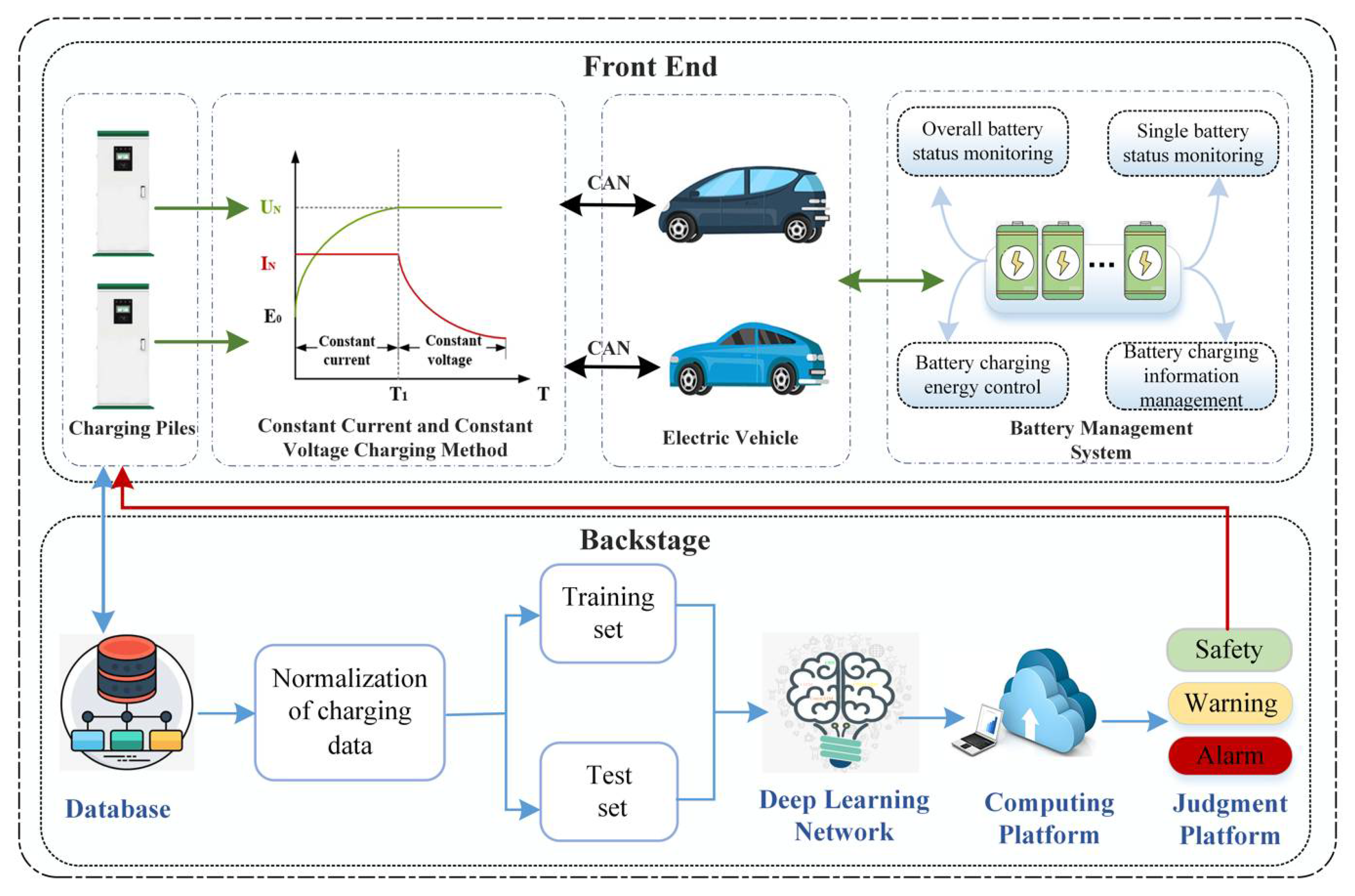

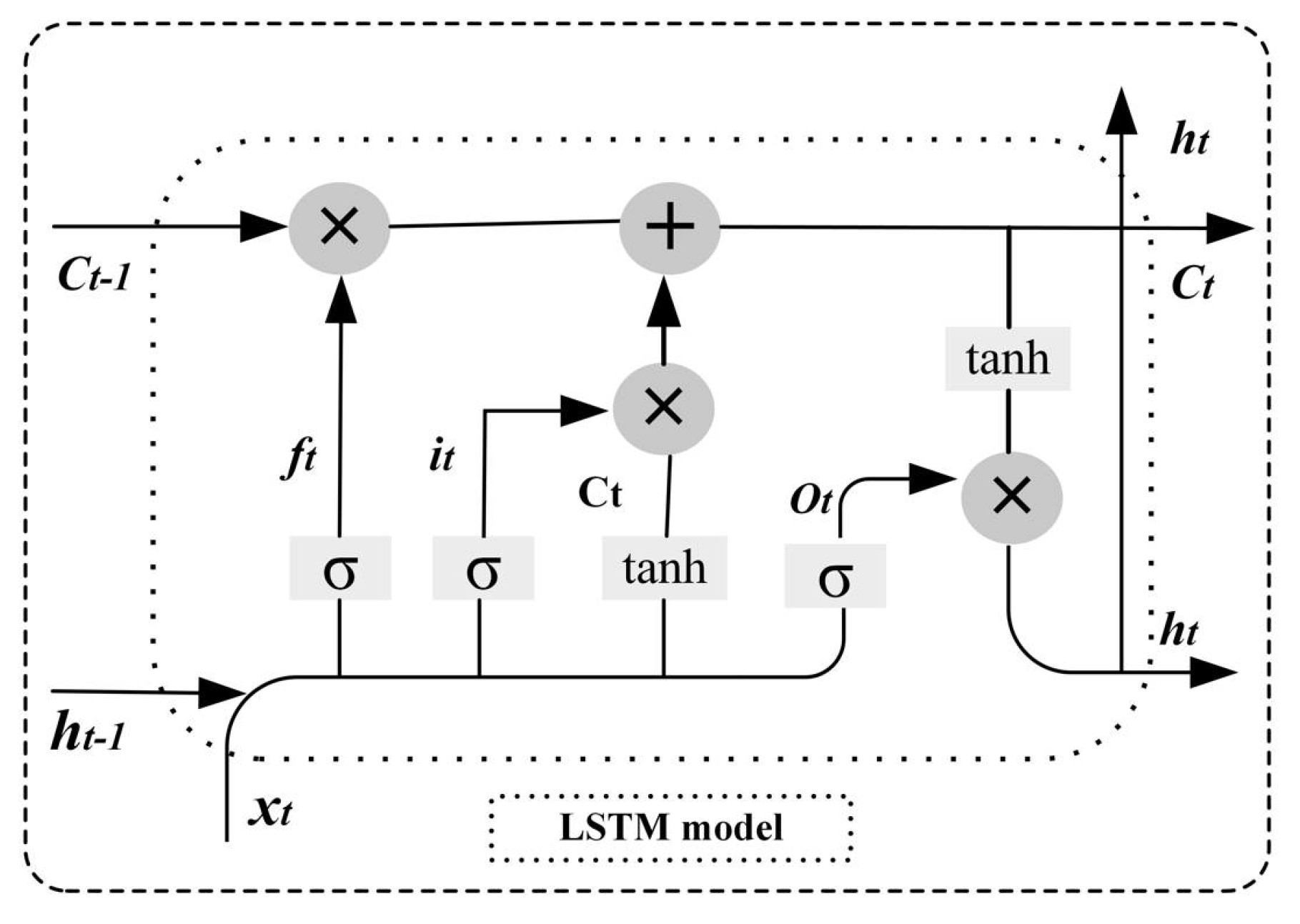
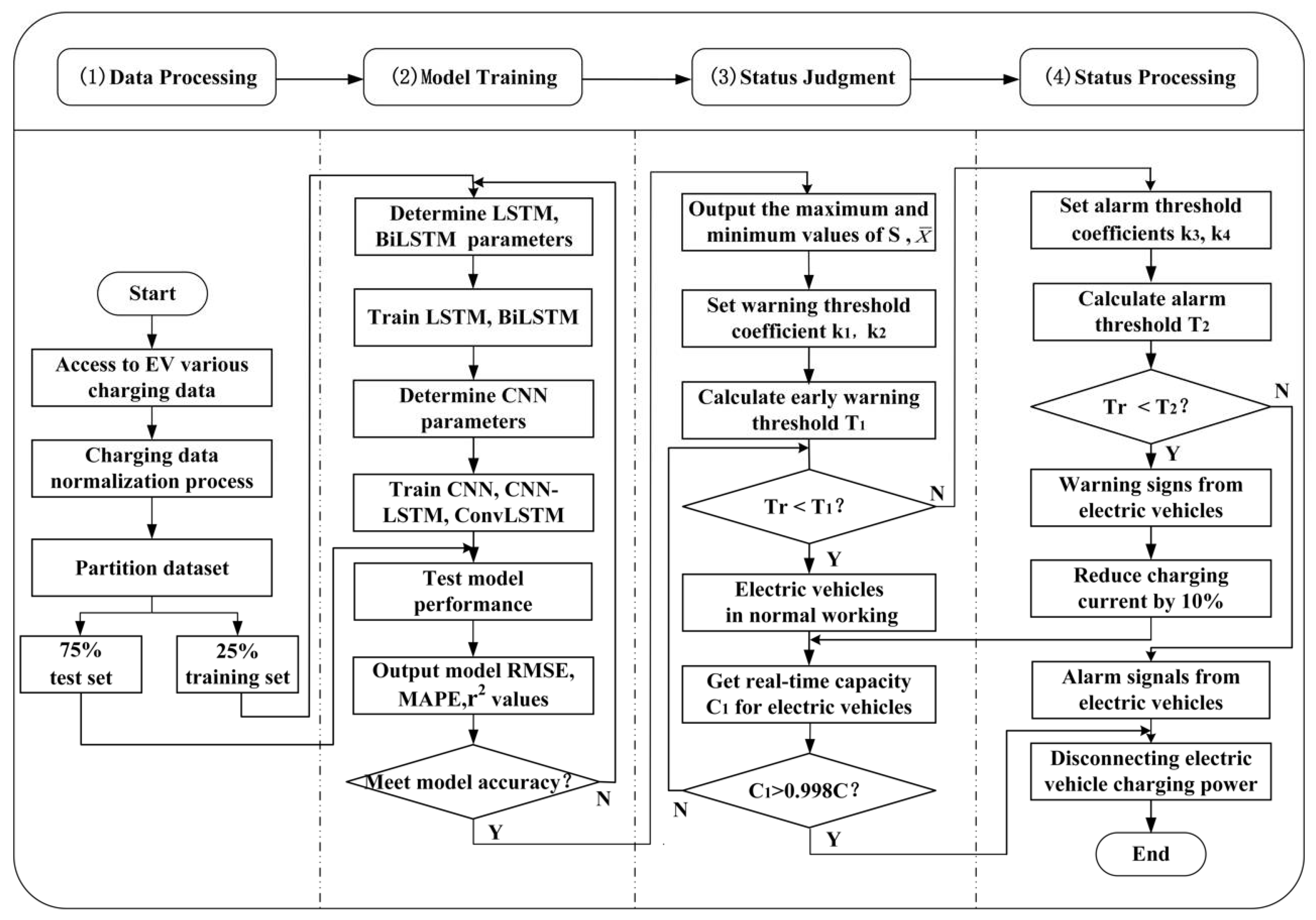
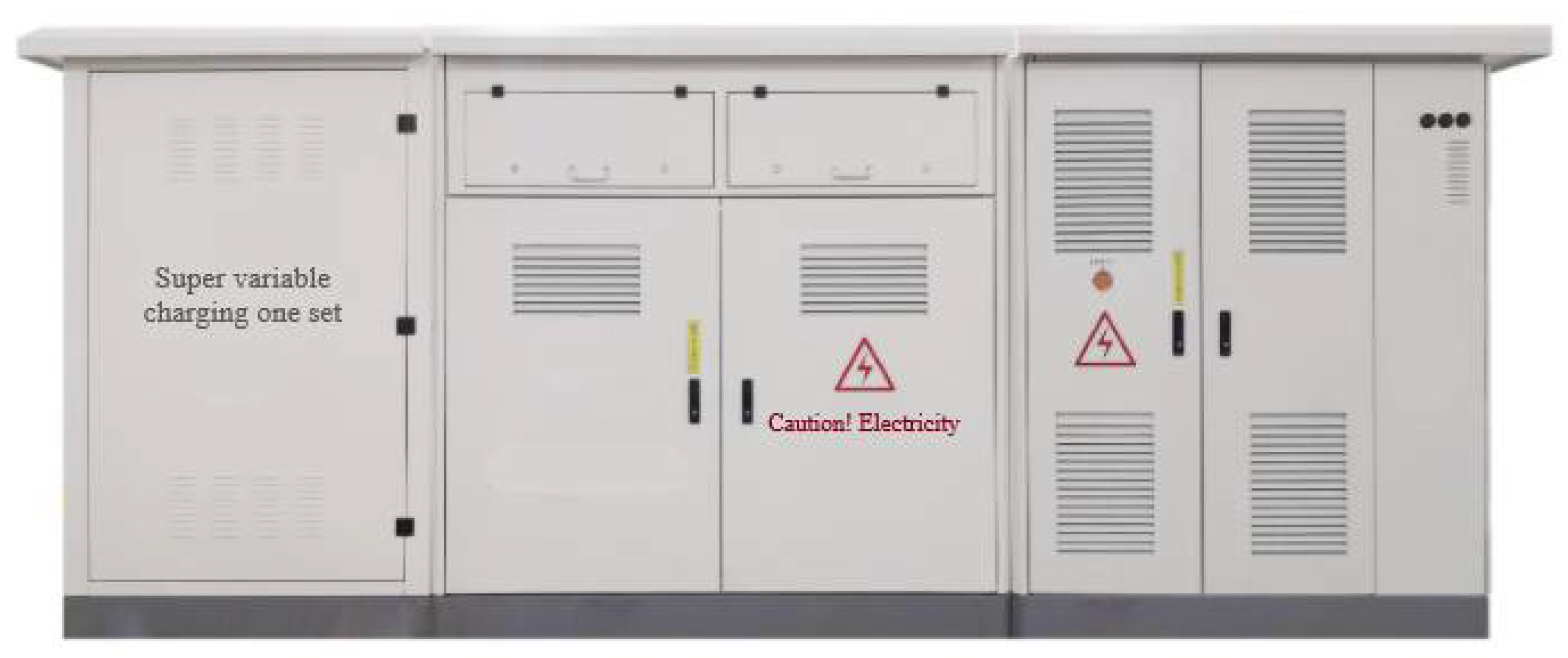
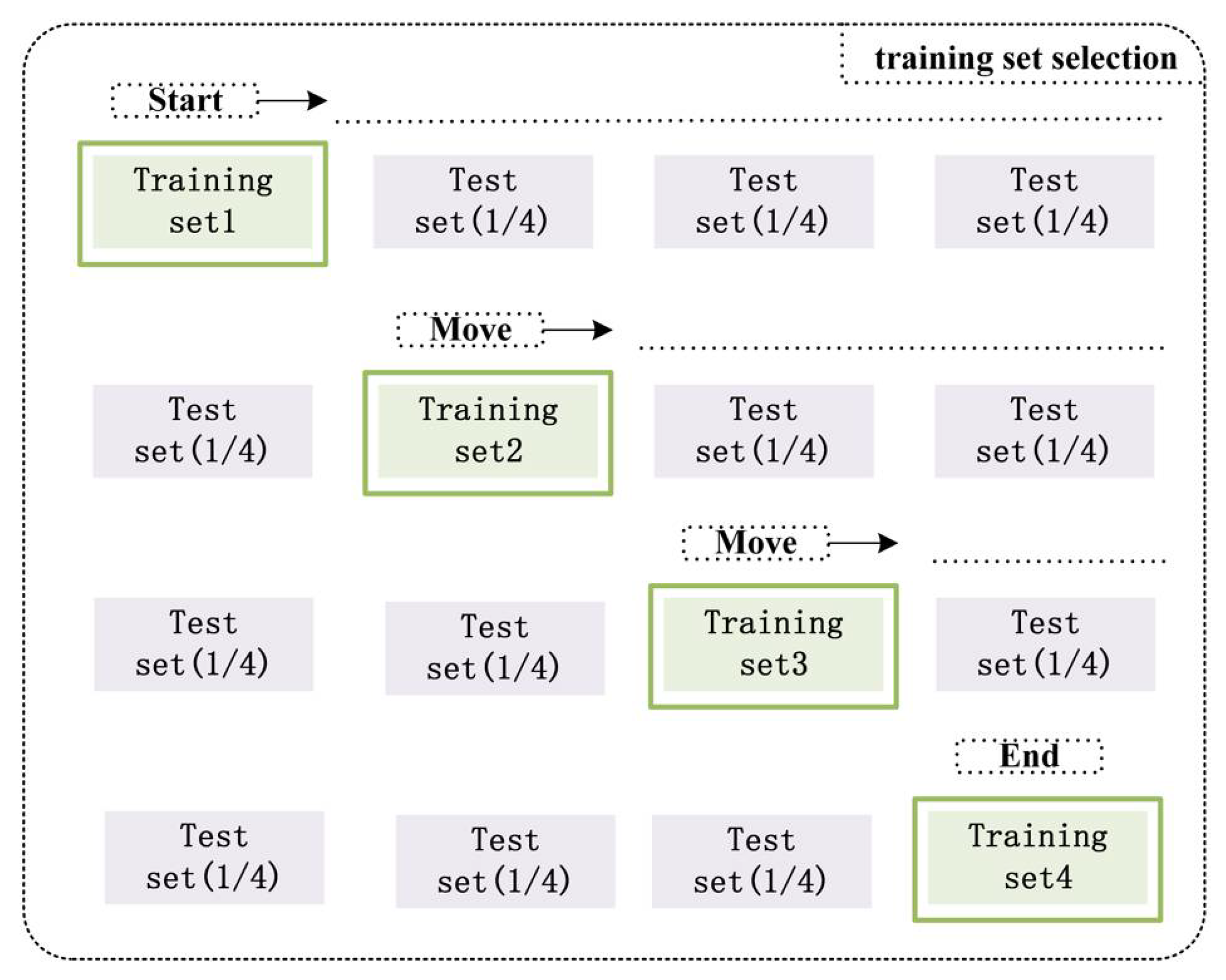
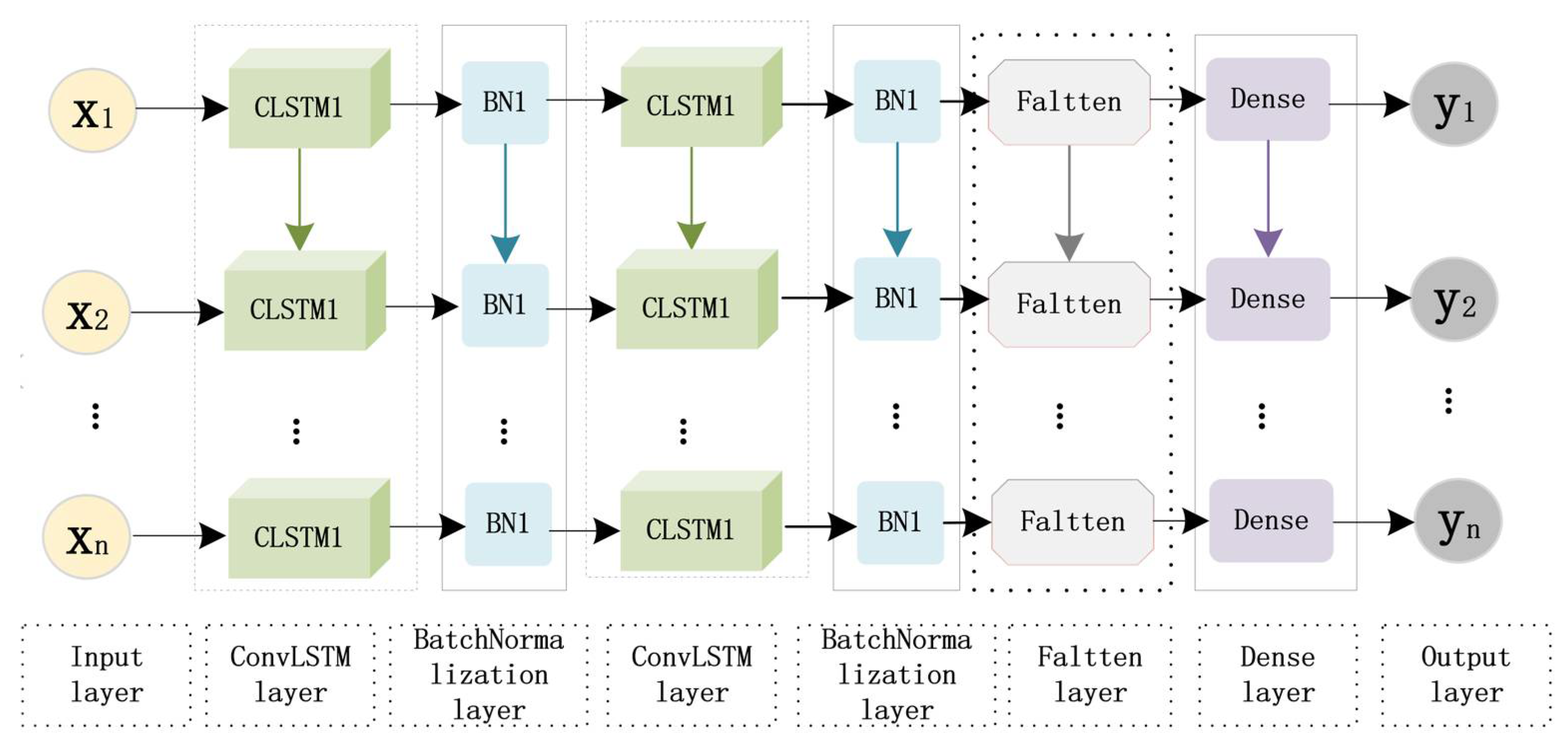
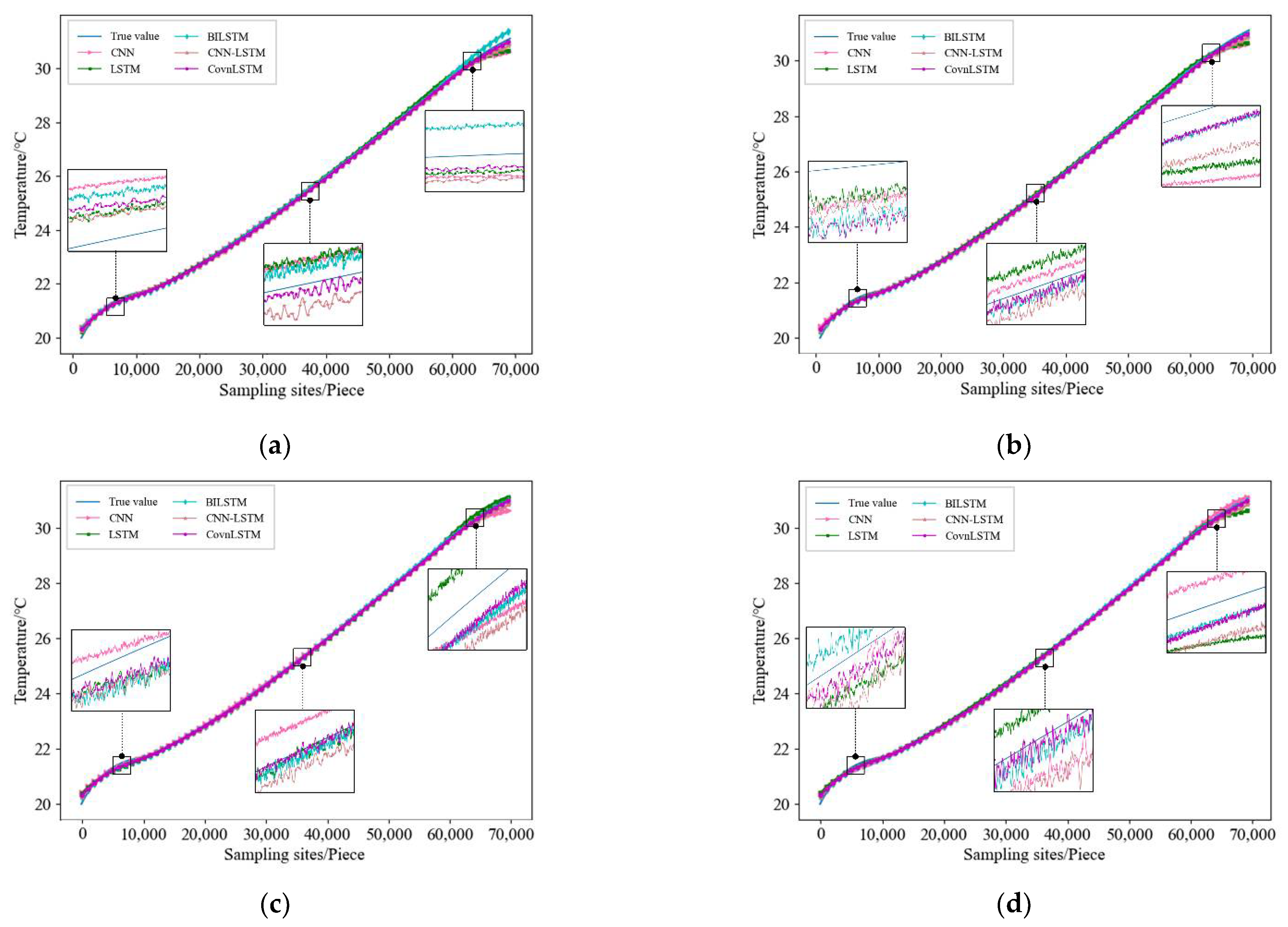
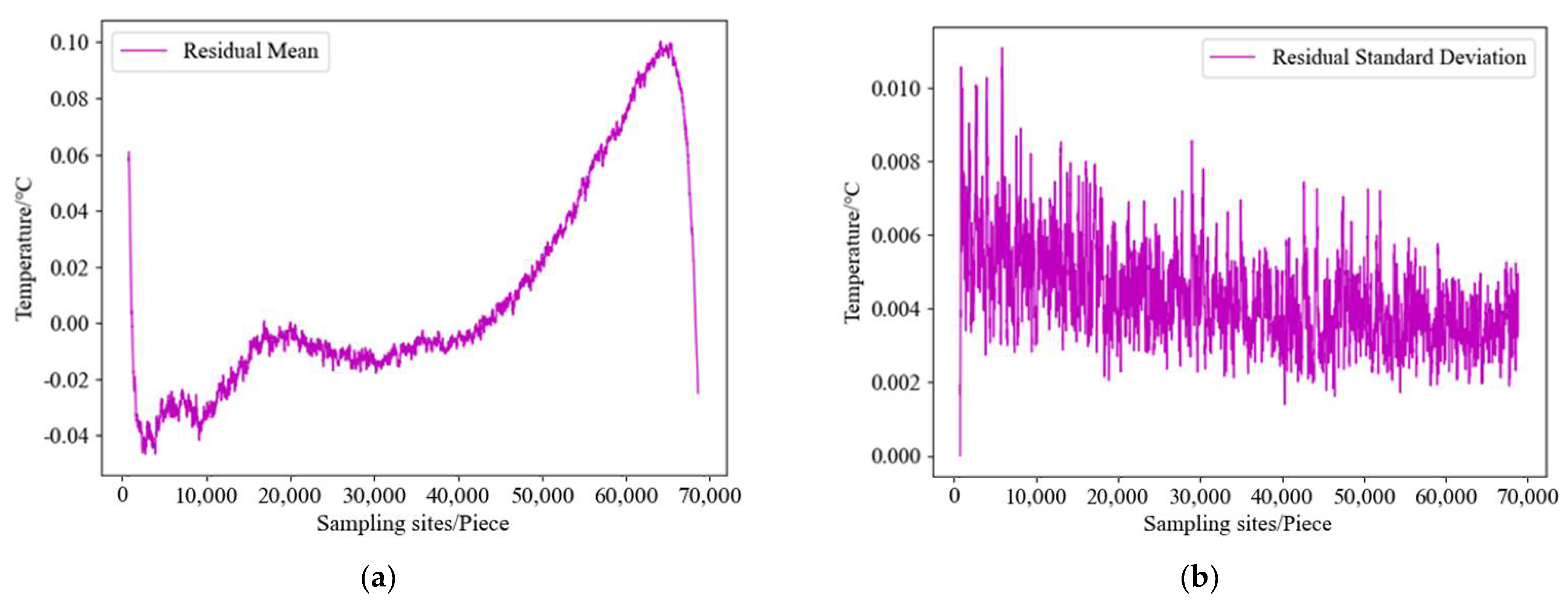
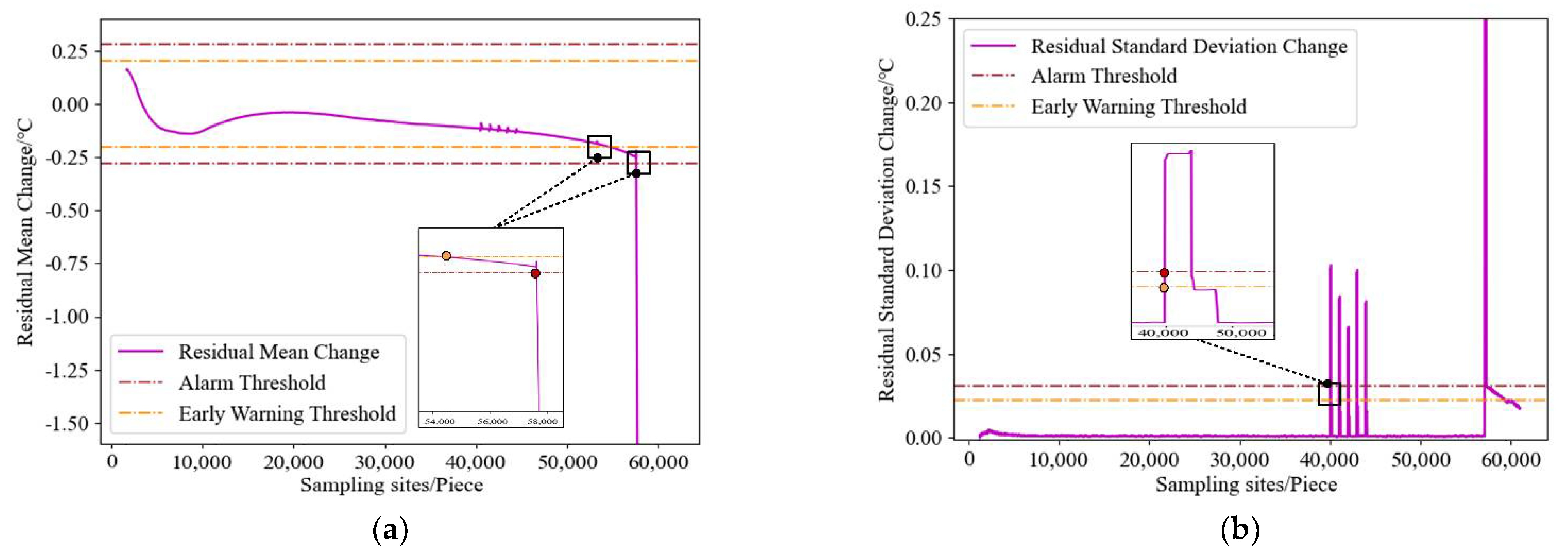
| Start Byte | Word Length/B | Parameter | Unit | Precision |
|---|---|---|---|---|
| 1 | 2 | Vehicle power battery rated capacity | A·h | 0.1 |
| 3 | 2 | Vehicle power battery rated voltage | V | 0.1 |
| 5 | 2 | Vehicle power battery rated current | A | 0.1 |
| 7 | 2 | Vehicle power battery demand voltage | V | 0.1 |
| 9 | 2 | Vehicle power battery demand current | A | 0.1 |
| 11 | 2 | The maximum allowable voltage of the vehicle power battery | V | 0.1 |
| 13 | 2 | The maximum allowable current of the vehicle power battery | A | 0.1 |
| 15 | 2 | The maximum allowable temperature of the vehicle power battery | °C | 1 |
| 17 | 2 | Charging method: (the first stage: constant current charging; the second stage: constant voltage charging) | First stage: A Second stage:V | 0.1 |
| Start Byte | Word Length/B | Parameter | Unit | Precision |
|---|---|---|---|---|
| 1 | 2 | Charge voltage measurement | V | 0.1 |
| 3 | 2 | Charge current measurement | A | 0.1 |
| 5 | 2 | Charge temperature measurement | °C | 0.1 |
| 7 | 2 | Cumulative charging time | min | 1 |
| 9 | 2 | Estimate remaining charging time | min | 1 |
| Methodology | Model Advantage | Model Disadvantage | Application Field | References |
|---|---|---|---|---|
| CNN | 1. Feature extraction can be automated; | 1. Training results do not easily converge to a global minimum; | Charging safety | [12] |
| 2. Shared convolution kernel, can handle high-dimensional data. | 2. Model improvement is more difficult due to encapsulation of feature extraction. | Fault Diagnosis | [13] | |
| LSTM | 1. Long time memory function to solve sequence modeling problems; | 1. Disadvantages in parallel processing; | Video Recognition | [15] |
| 2. Resolved the problem of gradient disappearance and gradient explosion. | 2. Average prediction compared to some of the latest networks. | Economic forecasts | [16] | |
| BiLSTM | 1. Information dependency can be captured in both directions; | 1. Inability to transmit start-point information for overly long sequences well; | Power Dispatch | [18] |
| 2. More effective where two-way forecasting is required. | 2. Inability to calculate the result of the next moment across the previous moment. | Wind speed forecast | [19] | |
| CNN-LSTM | 1. Has the advantages of CNN and is widely used in feature engineering; | 1. Unable to solve the prediction problem for bi-directional transmission; | Battery Prognostics | [21] |
| 2. Has the advantages of LSTM and is widely used in time series. | 2. Prediction effect limited by sequence length. | Genetic Prediction | [22] | |
| ConvLSTM | 1. Not only can temporal relationships be established, but also spatial features can be portrayed; | 1. Single time series problem, prediction results may not be as good as LSTM; | Video Detection | [24] |
| 2. State-to-state switching can be converted into a convolutional calculation. | 2. Single space series problem, prediction results may not be as good as CNN. | Fatigue Monitoring | [25] |
| Electric Vehicle Charging Status | Discriminatory Criteria |
|---|---|
| Early warning status |
|
| |
| Alarm status |
|
| |
|
| Simulation Model Parameters | Numerical Values |
|---|---|
| Battery type | Lithium iron phosphate battery |
| Battery capacity/kA·h | 150 |
| Rated charging voltage/V | 412 |
| Rated charging current/A | 220 |
| Maximum allowable temperature/°C | 41 |
| Minimum allowable temperature/°C | −18 |
| CNN Category | Parameters | LSTM Category | Parameters |
|---|---|---|---|
| Number of kernels | 32 | Cycle layers | 2 |
| Window size | 4 | Loop layer activation function | Tanh |
| Stride | 1 | Optimizer | Adam |
| Activation function | SELU | Neurons number | 90 |
| Pooling type | Global max pooling |
| Data Sets | Algorithm Type | Evaluation Indicators | ||
|---|---|---|---|---|
| RMSE/°C | MAPE/% | r2 | ||
| Training set 1 | CNN | 0.073 | 29.78 | 0.39 |
| LSTM | 0.056 | 20.44 | 0.41 | |
| BiLSTM | 0.048 | 17.59 | 0.51 | |
| CNN-LSTM | 0.039 | 13.29 | 0.63 | |
| ConvLSTM | 0.032 | 11.63 | 0.81 | |
| Training set 2 | CNN | 0.069 | 29.63 | 0.39 |
| LSTM | 0.061 | 20.52 | 0.46 | |
| BiLSTM | 0.046 | 17.32 | 0.57 | |
| CNN-LSTM | 0.039 | 13.11 | 0.68 | |
| ConvLSTM | 0.029 | 11.56 | 0.86 | |
| Training set 3 | CNN | 0.064 | 29.43 | 0.41 |
| LSTM | 0.048 | 20.23 | 0.49 | |
| BiLSTM | 0.043 | 17.36 | 0.56 | |
| CNN-LSTM | 0.035 | 12.91 | 0.67 | |
| ConvLSTM | 0.029 | 11.37 | 0.89 | |
| Training set 4 | CNN | 0.071 | 29.74 | 0.39 |
| LSTM | 0.054 | 20.36 | 0.43 | |
| BiLSTM | 0.046 | 17.53 | 0.53 | |
| CNN-LSTM | 0.036 | 13.09 | 0.64 | |
| ConvLSTM | 0.031 | 11.59 | 0.85 | |
| Residual Category | Parameters | Numerical Values/°C |
|---|---|---|
| Residual mean () Figure 9a | Minimum value () | −0.0468 |
| Maximum value () | 0.1004 | |
| Maximum absolute value () | 0.1004 | |
| The upper of early warning thresholds () Equation (6) | 0.2008 | |
| The lower of early warning thresholds () Equation (6) | −0.2008 | |
| The upper of alarm thresholds () Equation (7) | 0.2811 | |
| The lower of alarm thresholds () Equation (7) | −0.2811 | |
| Residual standard deviation () Figure 9b | Maximum value () | 0.0111 |
| Early warning thresholds () Equation (6) | 0.0222 | |
| Alarm thresholds () Equation (7) | 0.0311 |
Publisher’s Note: MDPI stays neutral with regard to jurisdictional claims in published maps and institutional affiliations. |
© 2022 by the authors. Licensee MDPI, Basel, Switzerland. This article is an open access article distributed under the terms and conditions of the Creative Commons Attribution (CC BY) license (https://creativecommons.org/licenses/by/4.0/).
Share and Cite
Zheng, X.; Gao, D.; Zhu, Z.; Yang, Q. An Early Warning Protection Method for Electric Vehicle Charging Based on the Hybrid Neural Network Model. World Electr. Veh. J. 2022, 13, 128. https://doi.org/10.3390/wevj13070128
Zheng X, Gao D, Zhu Z, Yang Q. An Early Warning Protection Method for Electric Vehicle Charging Based on the Hybrid Neural Network Model. World Electric Vehicle Journal. 2022; 13(7):128. https://doi.org/10.3390/wevj13070128
Chicago/Turabian StyleZheng, Xiaoyu, Dexin Gao, Zhenyu Zhu, and Qing Yang. 2022. "An Early Warning Protection Method for Electric Vehicle Charging Based on the Hybrid Neural Network Model" World Electric Vehicle Journal 13, no. 7: 128. https://doi.org/10.3390/wevj13070128
APA StyleZheng, X., Gao, D., Zhu, Z., & Yang, Q. (2022). An Early Warning Protection Method for Electric Vehicle Charging Based on the Hybrid Neural Network Model. World Electric Vehicle Journal, 13(7), 128. https://doi.org/10.3390/wevj13070128





